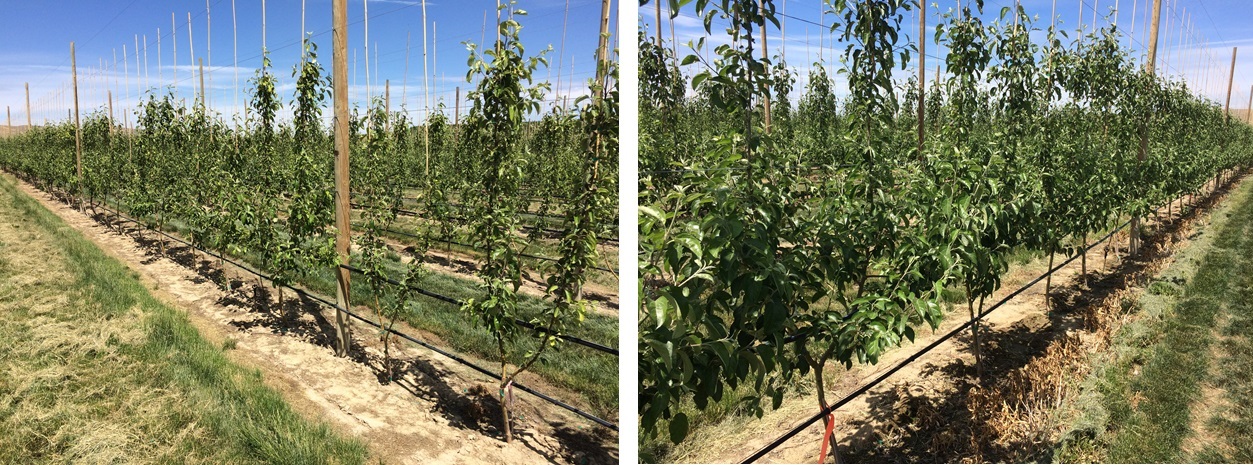Fall Fertility 2013: A Return To Normalcy … For Now
Once the dust settles on the 2013 fall fertilizer season, most of the nation’s ag retailers are expecting the year to have played out as expected. And this will be a welcome change from what happened to the marketplace during 2012.
One year ago, many dealerships, cooperatives and their grower-customers were admittedly struggling. In more than half the U.S., drought conditions were not only hurting the nation’s crop mix, these same bone dry days were severely curtailing the amount of fall fertilizer grower-customers were willing (or able, in some cases) to put into their fields.
“Nitrogen [usage] should be okay, but it still requires rain before it can be applied,” said Tim McArdle, COO/vice president for BRANDT, Springfield, IL, last fall when evaluating the market for crop nutrients.
Fertilizer prices, too, were impacted by the drought. In fact, according to Joe Dillier, director, plant food, agronomy division for GROWMARK, Bloomington, IL, price volatility was one of the hallmarks of 2012. “I would posit that fertilizer is the most volatile commodity out there, especially nitrogen-based fertilizers,” said Dillier, speaking at a January 2013 trade event. “With respect to grain, we had the worst drought since the mid-1950s and urea this past year was more volatile than even corn.”
In 2013, however, the outlook for fall fertilizer usage tells a different story. In many ways, it’s a complete opposite of the situations that existed during 2012. An exceptionally wet spring meant many grower-customers were late getting their spring fertilizer application work completed on time – or worse still, even getting their seed into the field at all. But for those that managed to complete their field work on time, a relatively wet and cool summer is expected to mean a big harvest this fall for both corn and soybeans (which USDA numbers predict will be in the 95 million and 77 million ranges, respectively).
Expecting Big Things
Likewise, this bodes well for fall fertilizer usage among grower-customers. “We are expecting a big fall when it comes to fertilizer use from our growers – as long as it stays dry enough,” says Jeff Homan, plant manager for Wabash Valley Service Co., Allendale, IL. “Overall, the crops around our area are looking much better than they did a year ago and that should translate into more fertilizer being applied by these growers to get ready for an equally big 2014 crop season. A good crop year in 2013 will mean that growers will want to take advantage of this plus and do what they can to ensure a strong year in 2014, as is always the case.”
Indeed, market watchers agree that the 2013-14 fertilizer usage should be strong. According to statistics compiled by the International Fertilizer Industry Association, demand for the three major crop nutrients — nitrogen, phosphorous and potash — should hit global numbers of 111.7 metric tons, 43.7 metric tons and 31.9 metric tons, respectively, in the coming year, with North America and Asia driving much of this growth.

Jim Fargo, Centennial Ag Supply, manages the Kersey operation, providing full-service to growers of irrigated corn, vegetables and dryland wheat.
Still, there are a few notes of caution that run counter to this strong fertilizer demand outlook. In some parts of the country, the long, wet weather conditions have altered the crop mix from fertilizer intensive ones such as corn to other, less fertilizer dependent forms. “In our area this year, we had a 30% loss in planted acres because of the wet weather,” says Jim Fargo, safety and compliance manager for Centennial Ag Supply Co., Kersey, CO. “For many of our growers, this meant a switch from planting corn in their fields to planting wheat instead.”
This crop shift was also noted much further east as well. “Because of how wet it’s been here, more of our growers have planted more wheat than we’ve seen in the past,” says Billy Lowder, facility manager for Crop Production Services (CPS), Albemarle, NC.
Even so, the majority of fertilizer industry watchers think 2013 has the potential to be a very positive year for the marketplace. “All of the ag retailers and growers I’ve talked with are very optimistic that 2013 and 2014 will be very solid fertilizer years, demand wise,” says Kerry Green, managing director for micronutrients supplier Wolf Trax Inc., Winnipeg, MB, CAN. “Given that, I don’t see any big changes in the growth potential or cut-backs in demand, as long as the market doesn’t overreact to some of the changes we’ve recently seen in the overall fertilizer picture.”
No Russian To Judgment
One of these changes is currently playing out in the potash marketplace. As one of the major crop nutrients used by U.S. growers, potash is vital to maintaining and increasing crop yields each season. And for the most part, the nation’s supply of potash comes from two sources — Canada and Russia.
Not surprisingly, the major potash suppliers in both countries have formed business cartels to manage the distribution and sale of this important macronutrient — Campotex in Canada and Betarusian Potash Co. (BPC) in Russia. With these cartels in the mix, potash prices have remained relatively stable for the past several years, with the crop nutrient selling for $900 per ton, on average.
However, on July 31, one of the BPC’s major potash producers, Uralkali, announced it was quitting the cartel, effective immediately, after reaching what the company called a “deadlock” over sales. Instead, Uralkali will now export its potash via a Swiss-based entity, Uralkali Trading.
The break-up of BPC shocked observers. As one market analyst put it upon hearing the news: “It is as if Saudi Arabia decided to leave OPEC.”
Naturally, the financial markets reacted negatively to this news. By mid-day on July 31, shares of all of the North America’s potash suppliers, including PotashCorp of Saskatchewan, The Mosaic Co. and Agrium Inc. lost more than $12 billion of their market value. Furthermore, potash prices were expected to take an immediate hit, dropping 25% to $300 per ton by the end of 2013, with some analysts predicting a further plunge in prices after that.
At presstime, ag retailers in the U.S. hadn’t noted any kind of a drop in potash prices. However, some were expecting it to occur in the near future.
“When we heard about the break-up of the Russian potash cartel, we were told that some kind of price decline might be coming, but it hasn’t shown up just yet,” says Centennial Ag’s Fargo. “But I suppose a crash could be showing up any day now.”
However, according to Bill Doyle, CEO of PotashCorp, talk of this kind of drop in global potash prices is unwarranted. “I don’t know how long it’s going to take, but I don’t see it as a long-term problem at all,” said Doyle, talking via a webcast to analysts and stakeholders in the company. “I would just urge people to take a deep breath and relax. Everything’s going to be just fine.”
West Fertilizer Fallout
Even if the break-up of the Russian potash cartel ends up as a non-factor in fertilizer fortunes going forward, the other big fertilizer event of 2013 — the explosion of the production plant in West, TX — is expected to cause some major ramifications for ag retailers in the coming years.
On April 17, a fire and subsequent explosion at the West Fertilizer Co. fertilizer plant in West killed 15 people and leveled many buildings in the tiny town. Although the ignition that caused the blast is still under investigation, it was determined that some 270 tons of ammonium nitrate stored at the facility was the reason the explosion was so destructive.
Since that event, any facility that distributes fertilizer as a regular part of its business has been under more intense scrutiny, from both the popular press and regulators. Luckily, as Kathy Mathers, director of public affairs for The Fertilizer Institute, points out, the number of facilities that actually keep ammonium nitrate on their grounds has dropped significantly in the past few years.
“There are more than 6,000 fertilizer facilities in the U.S., but less than 2% of them actually sell ammonium nitrate,” says Mathers. Still, she adds, it remains a popular fertilizer in places such as Central Texas, where the alkaline soil can react negatively with alternative forms of nitrogen-based fertilizer.
In early August, Paul Derig, environment, health and safety (EHS) manager for J.R. Simplot Co. testified before a House of Representatives subcommittee hearing on behalf of the Agricultural Retailers Association (ARA) regarding the West, TX, fertilizer situation. In his presentation, Derig made the following key points:
- The industry would form ResponsibleAg, a new member-led performance management system that will establish foundational EHS practices with third-party inspections overseen.
- There is a need for permanent or long-term reauthorization of the Chemical Facility Anti-Terrorism Standards (CFATS) program for regulatory certainty.
On behalf of ARA, Deng also recommended several enhancements to the CFATS program and the Ammonium Nitrate Fertilizer Registration Program, including the targeting of unidentified chemical facilities through intergovernmental and industry cooperation and a reassessment of CFATS small facility compliance burdens.
“The CFATS program is not perfect, but it’s broken,” said Deng. “At this stage, it could benefit from stricter timelines, measurable and accountable metrics and tangible action-based outcomes.”
He also called for a reevaluation of the Ammonium Nitrate Fertilizer Registration Program itself. “In 2005, ARA testified in support of the Secure Handling of Ammonium Nitrate Act to seek traceability regulations for ammonium nitrate, and this legislation was signed into law in 2007,” he said. “However, it has now been nearly six years since this law was enacted and the Department of Homeland Security has not implemented a final rule.”
As a matter of company policy, many ag retailers have dropped ammonium nitrate from this fertilizer product mix. “We haven’t carried it in many years due to our parent company’s mandate,” says Wabash Valley’s Homan.
Despite this fact, other ag retailers predict more regulations are coming for all fertilizer dealers, regardless of whether or not they handle ammonium nitrate. “I think it’s coming,” says CPS’ Lowder. “That’s part of the reason we’ve spent the better part of the past year upgrading our fertilizer building, even though the state of North Carolina hasn’t required us to do so.”
Centennial Ag’s Fargo agrees. “We are already seeing stricter regulations on how companies in our state transport fertilizer products via railroad,” he says. “And this may only be the beginning for ag retailers like ourselves.”






